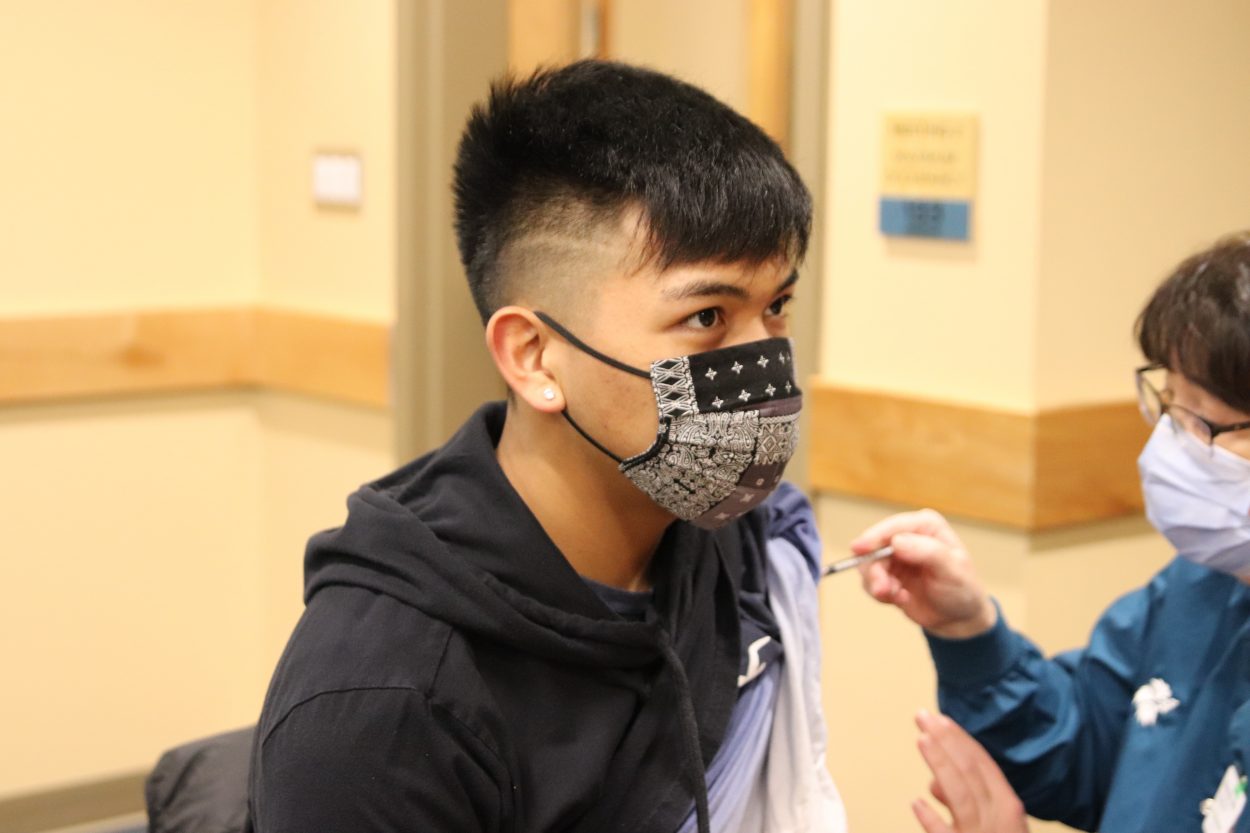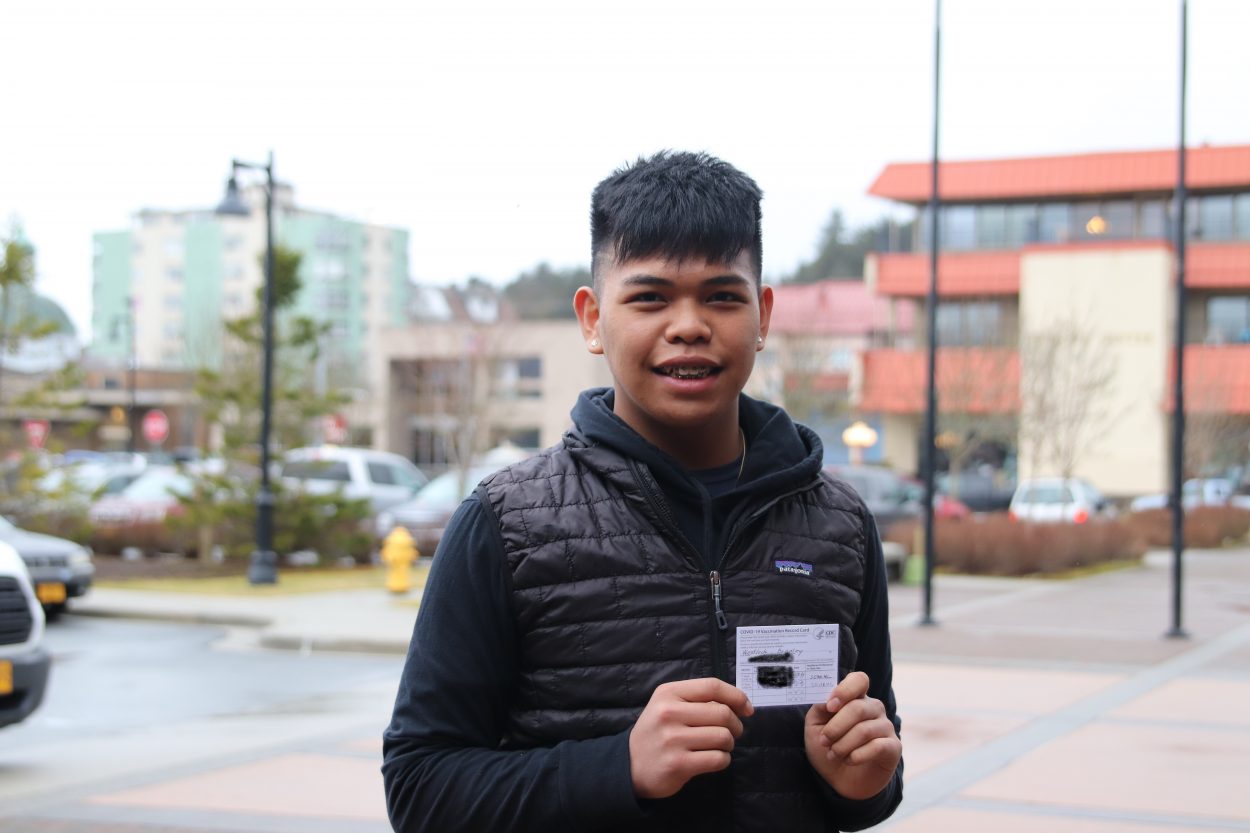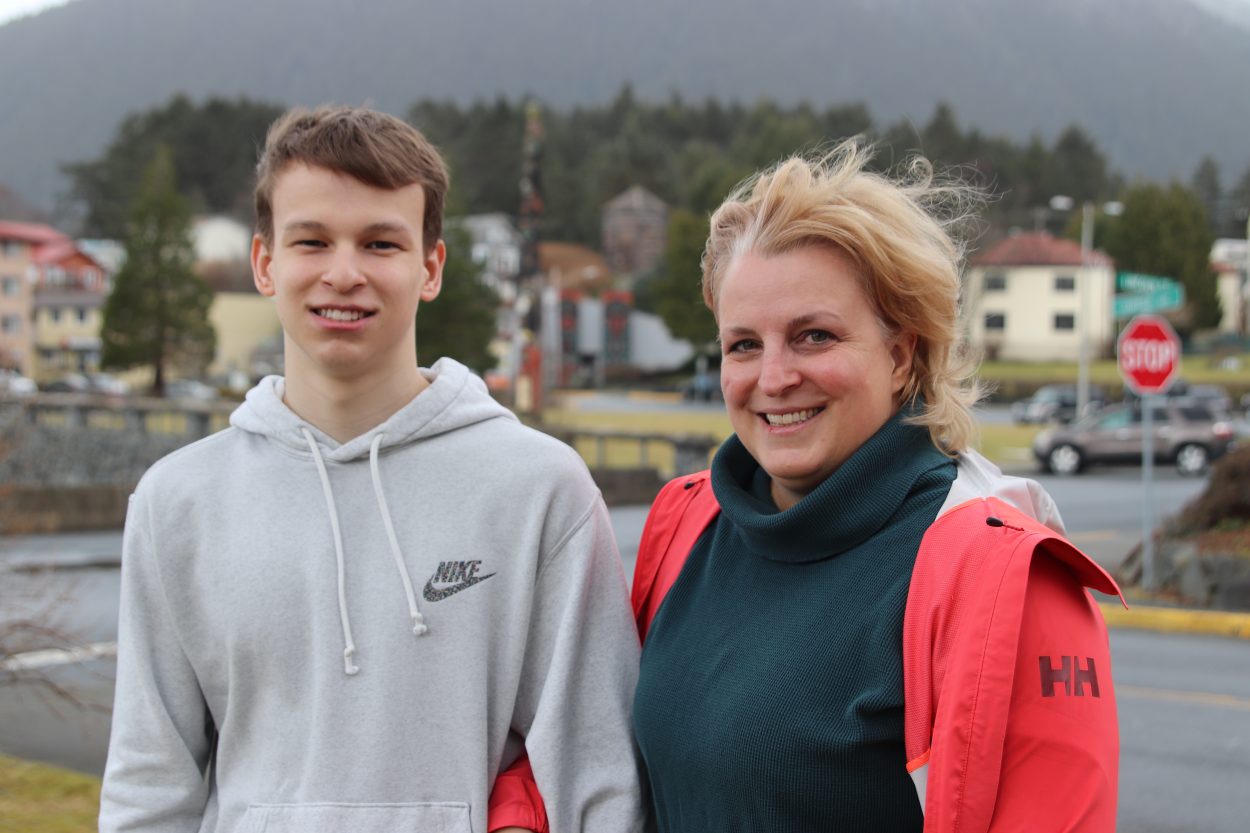
In a state that’s doing well with vaccinations, the community of Sitka is doing very well: More than half of the eligible population has been vaccinated against COVID-19, and that now includes teenagers 16 and over — making Sitka one of the first places in the nation where this has been possible.
Sitka’s success is based on the smart management of a dual vaccine supply, and a lot of hard work.
The COVID vaccine clinic set up at Sitka’s centennial building looks different from many in the lower-48. For one thing, there’s no line, no crowds.
Patients pop in every few minutes for their appointments, and they don’t have to wait very long before a nurse directs them to roll up their sleeve.
Another big difference? Some of the faces are younger. Much younger. 17-year-old Bradley Westlock is a senior at Mt. Edgecumbe High School. And he and a group of his classmates just got their second doses of the Pfizer vaccine.
“I feel lucky and thankful that I got the shot,” Westlock says. “Hoping that everything will go back to normal once everyone gets vaccinated.”
Normal for Westlock is attending school in Sitka and being able to travel home over breaks. He’s from the Yup’ik village of Emmonak on the mouth of the Yukon River. He’s hoping now that he’s vaccinated, traveling home will be safer.
“That’s why I got it,” he says. “Just to protect them.”

Westlock and his peers are some of the first teens in the country to receive the vaccine. And it’s no accident–it took a lot of work to get here.
“Young people are people that move through the community quickly. They have lots of social activities and lots of social contact,” says Dr. Elliot Bruhl. He’s the Chief Medical Officer at the Southeast Alaska Regional Health Consortium, or SEARHC. The Tribal health organization serves Sitka and many other rural communities in this part of the state. To date, its hospital has administered over 3700 first and 2250 second doses of the vaccine in Sitka, which has a population of around 8500 people. Add in the efforts of a second vaccine clinic run by Sitka’s local pharmacies, and more than 50 percent of eligible Sitkans have received at least one dose.
“As these vaccines came, we saw it as a moral and ethical imperative that we would not leave vaccines in the freezer,” Bruhl says.
He says there are several reasons the hospital’s vaccine rollout has been so successful. The first is a robust vaccine allocation–they get two supplies, one from the state and one from the Indian Health Service (IHS), and IHS has been extremely efficient across the whole country in getting vaccines out. SEARHC also built an efficient online vaccine registration system from scratch that uses QR codes to streamline the process. Bruhl says they’ve put enormous resources toward vaccinating whole communities, Alaska Native people and non-Native residents alike.
“Elbow grease,” is a key ingredient, says Bruhl. “Attitude makes the difference in life and in work, and in this instance we said this is our number one priority and we put the muscle behind that.”
The extra supply and the quick delivery reflect the sovereign relationship between Tribes and the federal government. It’s a big part of why Alaska is doing so well on the vaccine front. Many Indigenous communities in the state have been hit hard by COVID, and there’s historical trauma associated with previous epidemics. All of this informs Tribal health providers’ urgency as they work to get the vaccine out in communities.
Since the first vaccine doses arrived in Alaska in December, SEARHC has held around three clinics a week, and can give around 250 vaccinations in one clinic. SEARHC brought the vaccine to all of the remote communities they serve, by float plane if the weather was good enough to fly, and by boat if it wasn’t. Vaccination rates in those communities now range anywhere from 35 to 85 percent. And a couple of weeks ago, when the clinics were no longer saturated with people in the higher risk groups, SEARHC opened vaccine registration up to anyone 16 and older.
Teens like Silas Demmert. He jumped at the opportunity. He’s a cross country runner, and during the summer he works at a local grocery store. He got his vaccine on Tuesday.
“I want it and it’s, like, nice to have that sense of immunity. But I’m also 16, I’m kind of healthier, so it was nice to hear that they’re getting it to people that need it more.”
“Honestly it’s thrilling,” says his mom, Emily Demmert. She’s an English teacher at Sitka High School. She got vaccinated earlier this month (around 85 percent of Sitka teachers and staff are vaccinated). But when her students started flourishing their vaccine cards, she really breathed a sigh of relief.
“Honestly, when a couple of my students shared that they were getting the vaccine the other day, I just got this spark of joy that was like ‘Yes!’ Now we’re really going to see some changes, I think,” she says.

Demmert says teens in her class get the pandemic, they get “masking” and sanitizing…but social distancing? That’s a tough one to grok when you’re 16.
“They say things like ‘I just want to go back to normal.’ I mean I understand we have to have these mitigations, and we want to encourage them to do their distancing and mask wearing and all that,” she says. “But we also have to be realistic. They’re just kids. So, we’re asking them to go against their very nature…we just shouldn’t be too hard on them.”
She says she hopes the vaccine will bring her teens at home, and in her classroom, some of that “normal” they’ve been aching for.






























